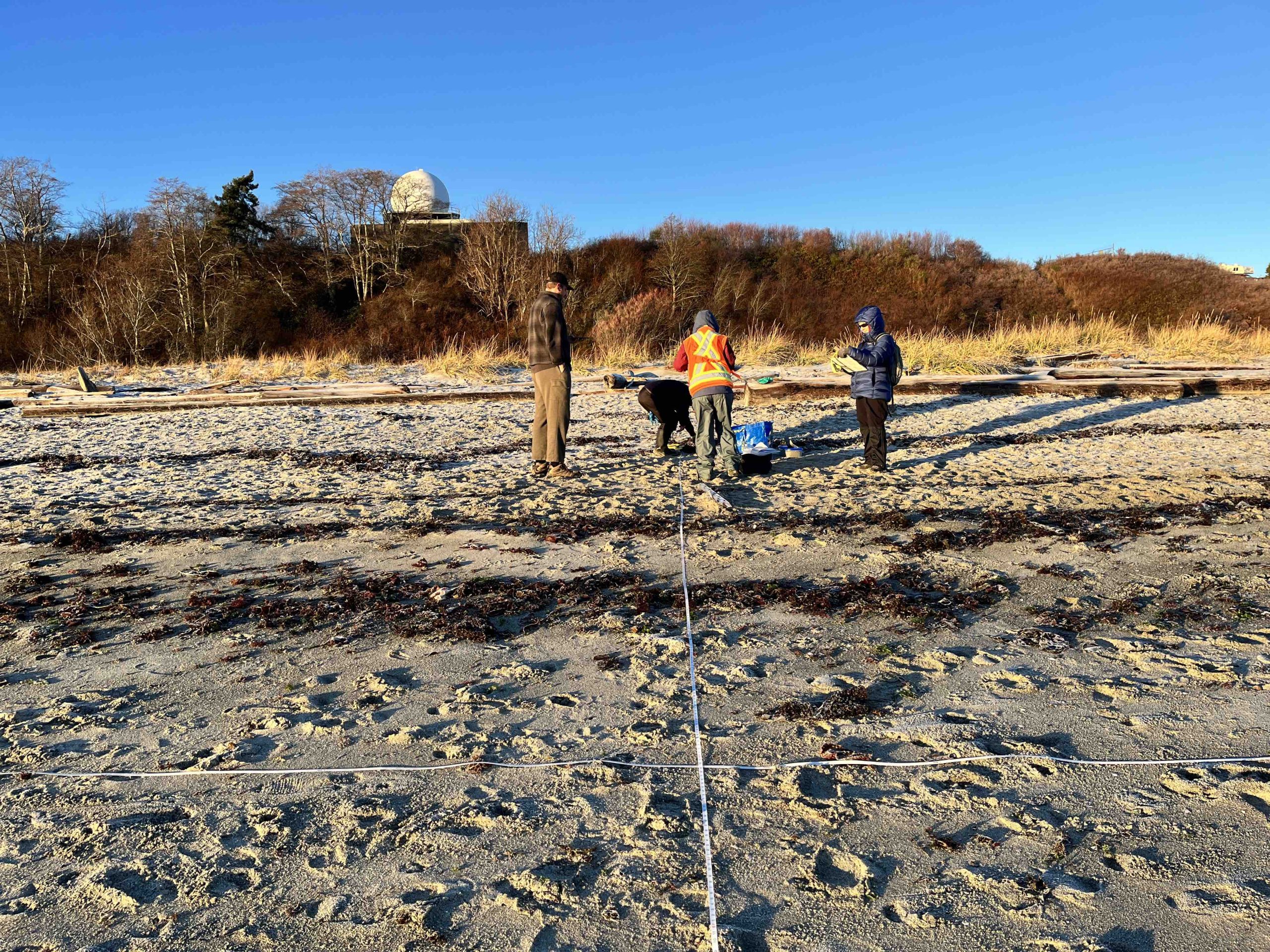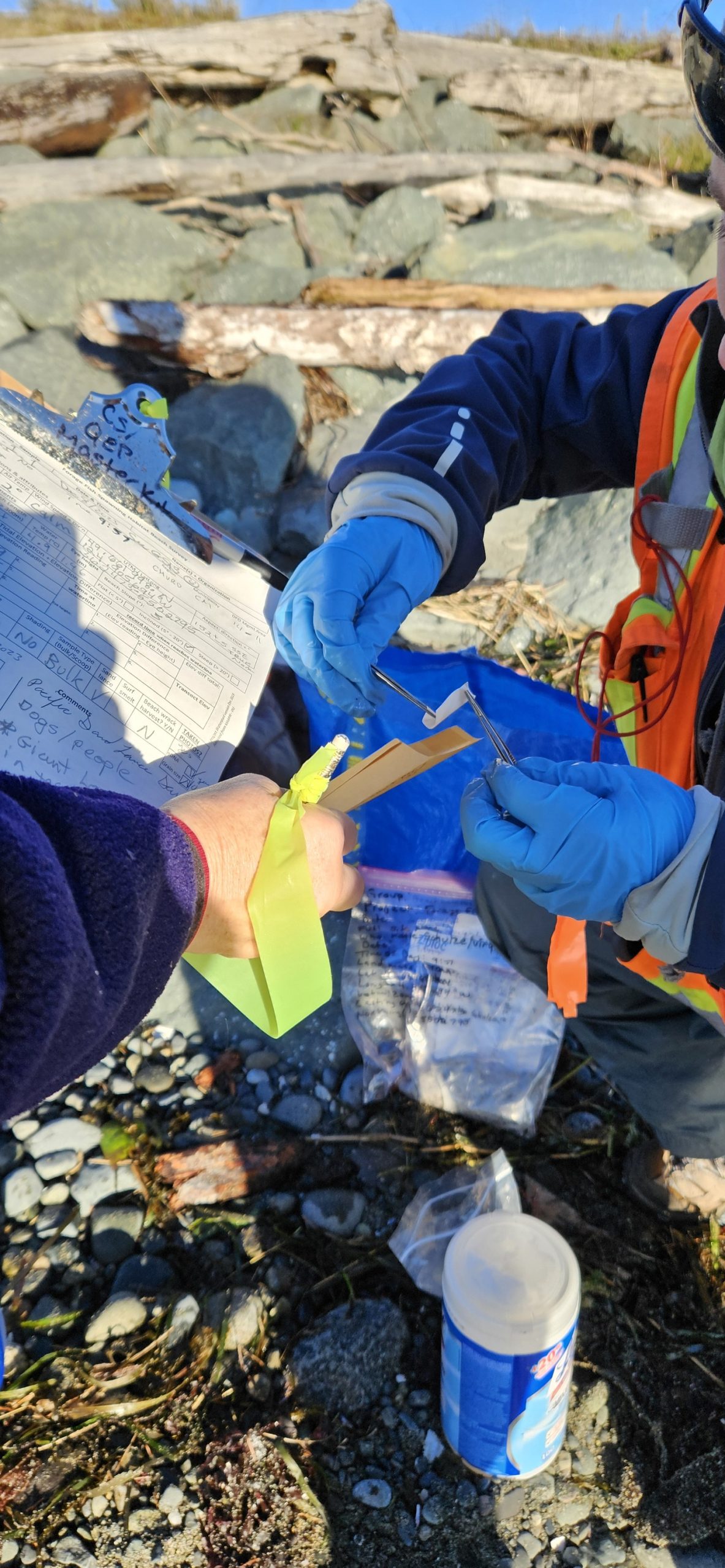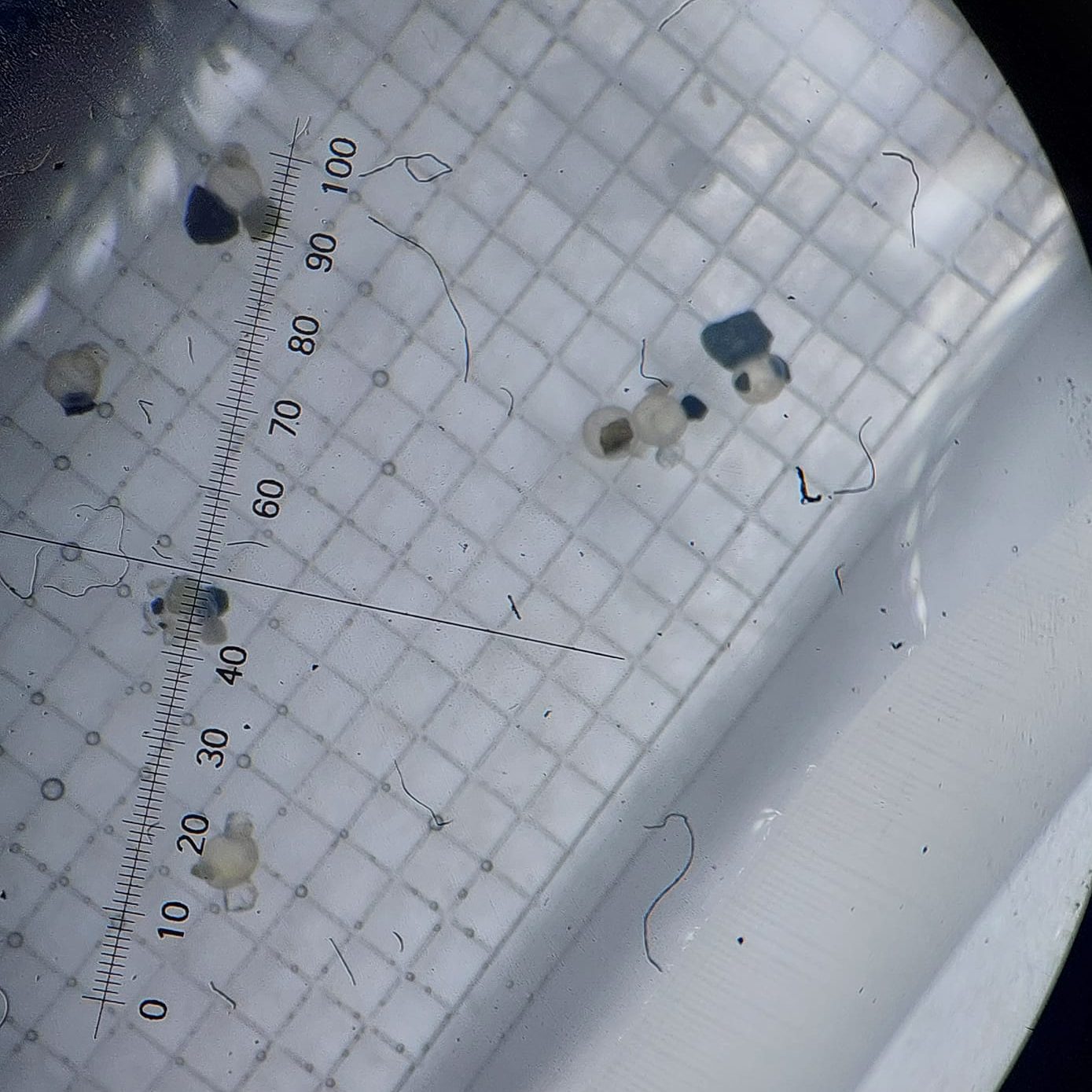Pacific Sand Lance Day Success
Airforce Beach survey on Dec 8, 2023 ~ Katie Schulze
Testing eDNA techniques ~ Tannis Baker
Beach survey ~ Tannis Baker
December 8, 2023 was the first annual Pacific Sand Lance Day! This date was decided upon by the members of the Coastal Forage Fish Network (CFFN) because it is right in the middle of the Salish Sea sand lance spawning season. The idea is for all teams to get out in the field and sample on or around this date so that we can compare the data more easily.
Pacific sand lance are a type of skinny forage fish that are understudied but very important to our coastal ecosystem. Sand lance have over 100 known predators, and are particularly important to nesting sea birds. This eclectic fish buries into sandy sea beds, hibernates all winter, and spawns on beaches!
Eggs are deposited into the top 5cm of coarse, sandy beaches, and they’ll incubate for about a month. In the spring and summer sand lance feed on zooplankton whenever there is light.
Citizen scientists, First Nations, and non-profits across the south coast have been putting sand lance spawning beaches on the map since 2001. Over 100 beaches have been found in the Canadian Salish Sea, and well over 900 beaches on the US Salish Sea!
Project Watershed is conducting beach monitoring, and habitat mapping for this cryptic species. To learn more visit our Forage Fish page. Want to help? Connect with us about our volunteer citizen science program.
Forage fish eggs under the microscope ~ V. East




